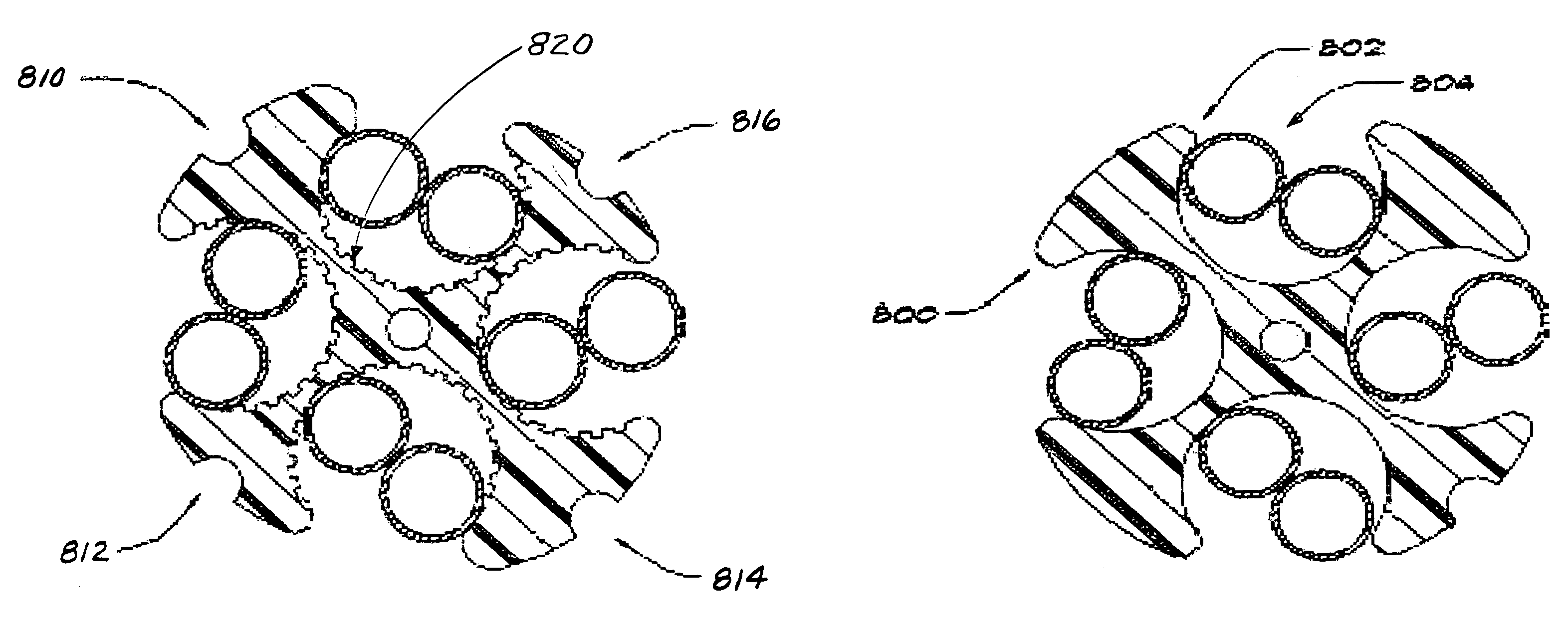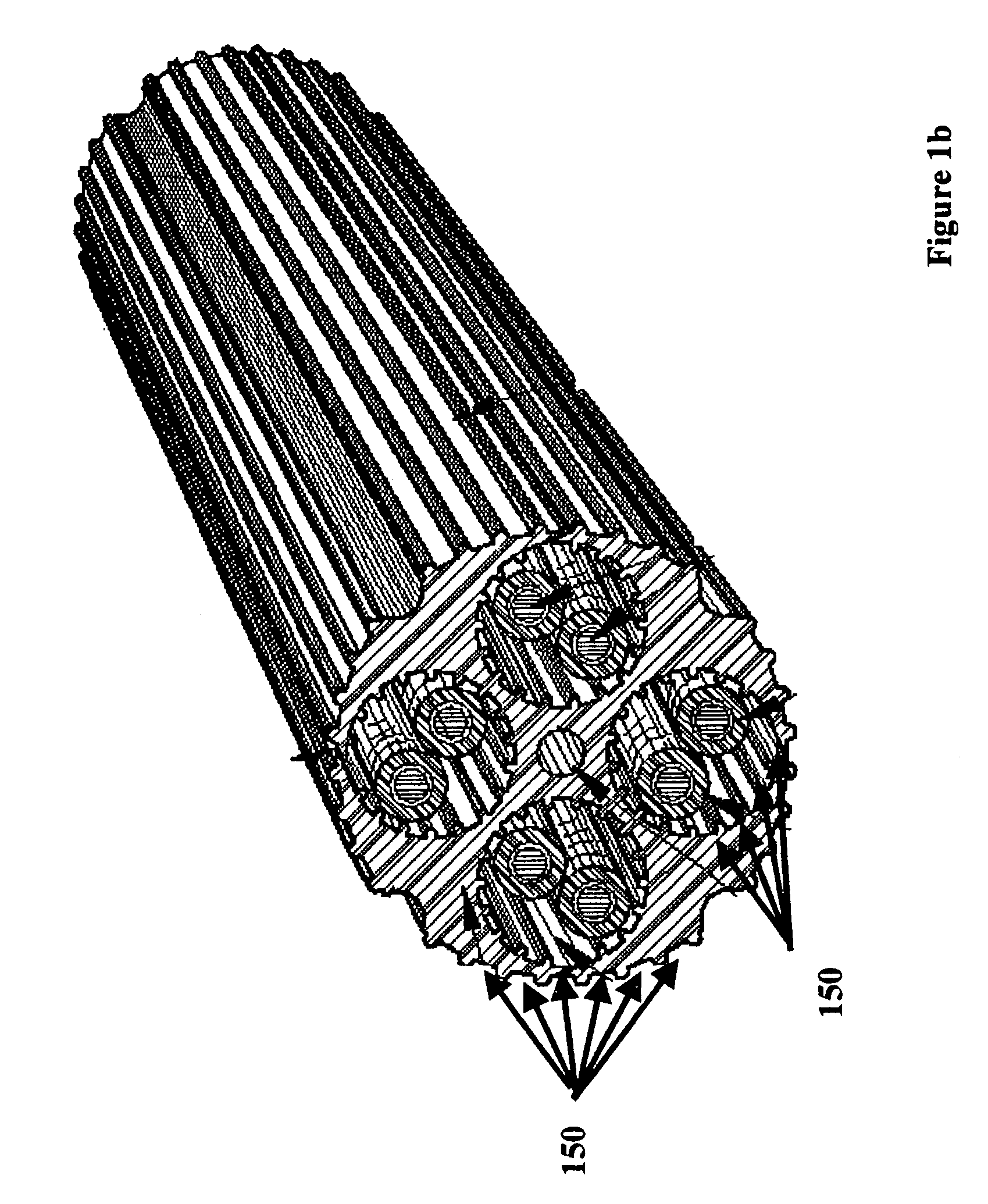High performance support-separators for communications cables
a technology of support and separation, which is applied in the direction of insulated conductors, cables, waveguides, etc., can solve the problems of increased unwanted cross-talk, shielded cables, and undesirable energy transferred between conductor pairs, so as to improve power sum, improve electrical properties, and crush resistance similar
- Summary
- Abstract
- Description
- Claims
- Application Information
AI Technical Summary
Benefits of technology
Problems solved by technology
Method used
Image
Examples
Embodiment Construction
[0088]The following description will further help to explain the inventive features of the cable and the interior support portion of the cable.
[0089]FIG. 1a is a top-right view of one embodiment of this invention. The shown embodiment has an interior support shown as an anvil-shaped separator (110). The interior support anvil-shaped separator, shown in more detail in FIGS. 3 and 4, runs along the longitudinal length on the cable. The interior support anvil-shaped separator, hereinafter, in the detailed description, referred to as the “anvil-shaped separator”, has a central region (112) extending along the longitudinal length of the cable. The center region includes a cavity that runs the length of the separator in which a strength member (114) may be inserted. Channels 120, 122, 124, and 126 extend along the length of the anvil-shaped separator and provide compartments for conductors (130).
[0090]A strength member may be added to the cable. The strength member (114) in the shown embo...
PUM
| Property | Measurement | Unit |
|---|---|---|
| frequencies | aaaaa | aaaaa |
| frequencies | aaaaa | aaaaa |
| voltage | aaaaa | aaaaa |
Abstract
Description
Claims
Application Information
 Login to View More
Login to View More - R&D
- Intellectual Property
- Life Sciences
- Materials
- Tech Scout
- Unparalleled Data Quality
- Higher Quality Content
- 60% Fewer Hallucinations
Browse by: Latest US Patents, China's latest patents, Technical Efficacy Thesaurus, Application Domain, Technology Topic, Popular Technical Reports.
© 2025 PatSnap. All rights reserved.Legal|Privacy policy|Modern Slavery Act Transparency Statement|Sitemap|About US| Contact US: help@patsnap.com



